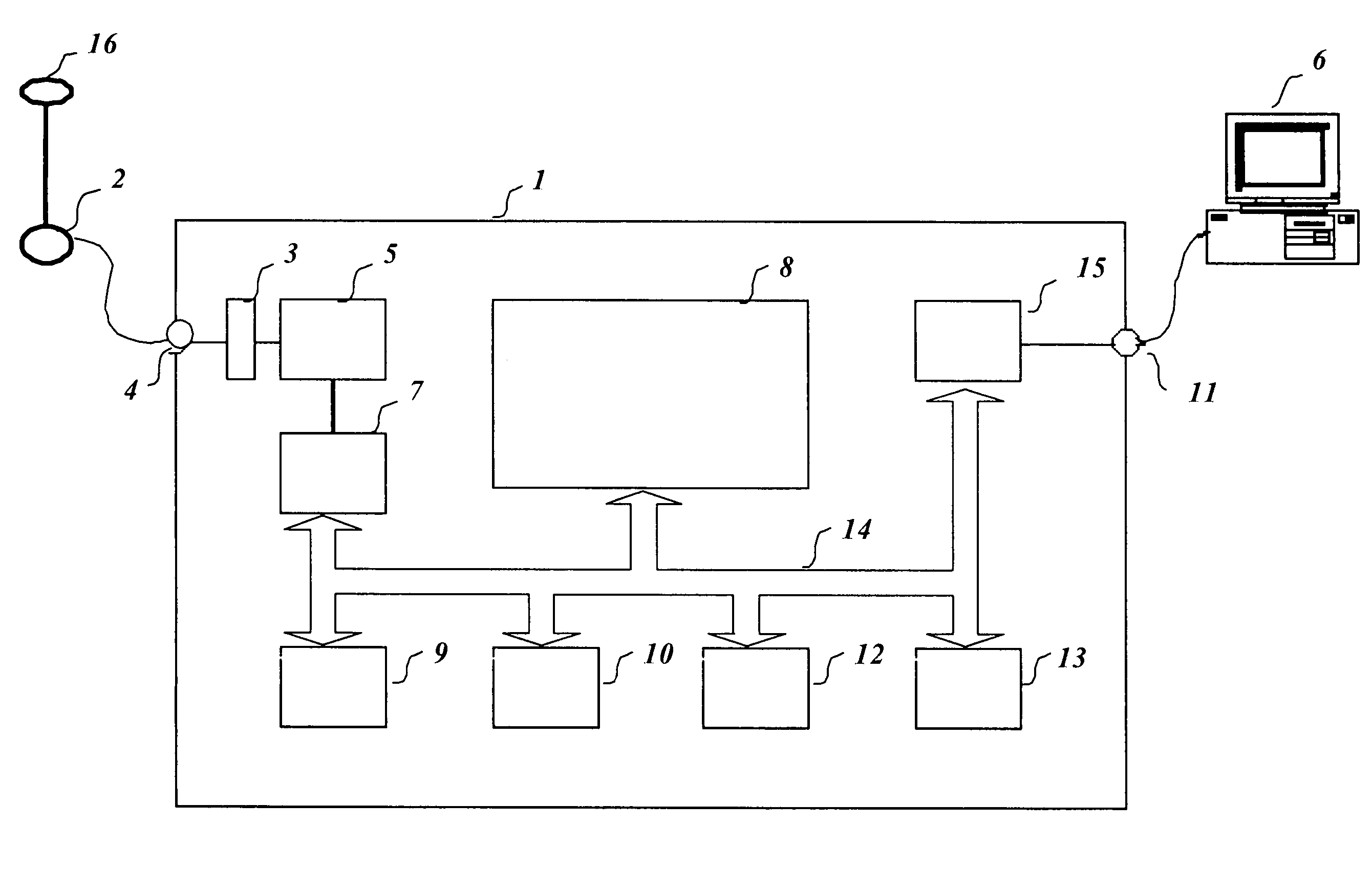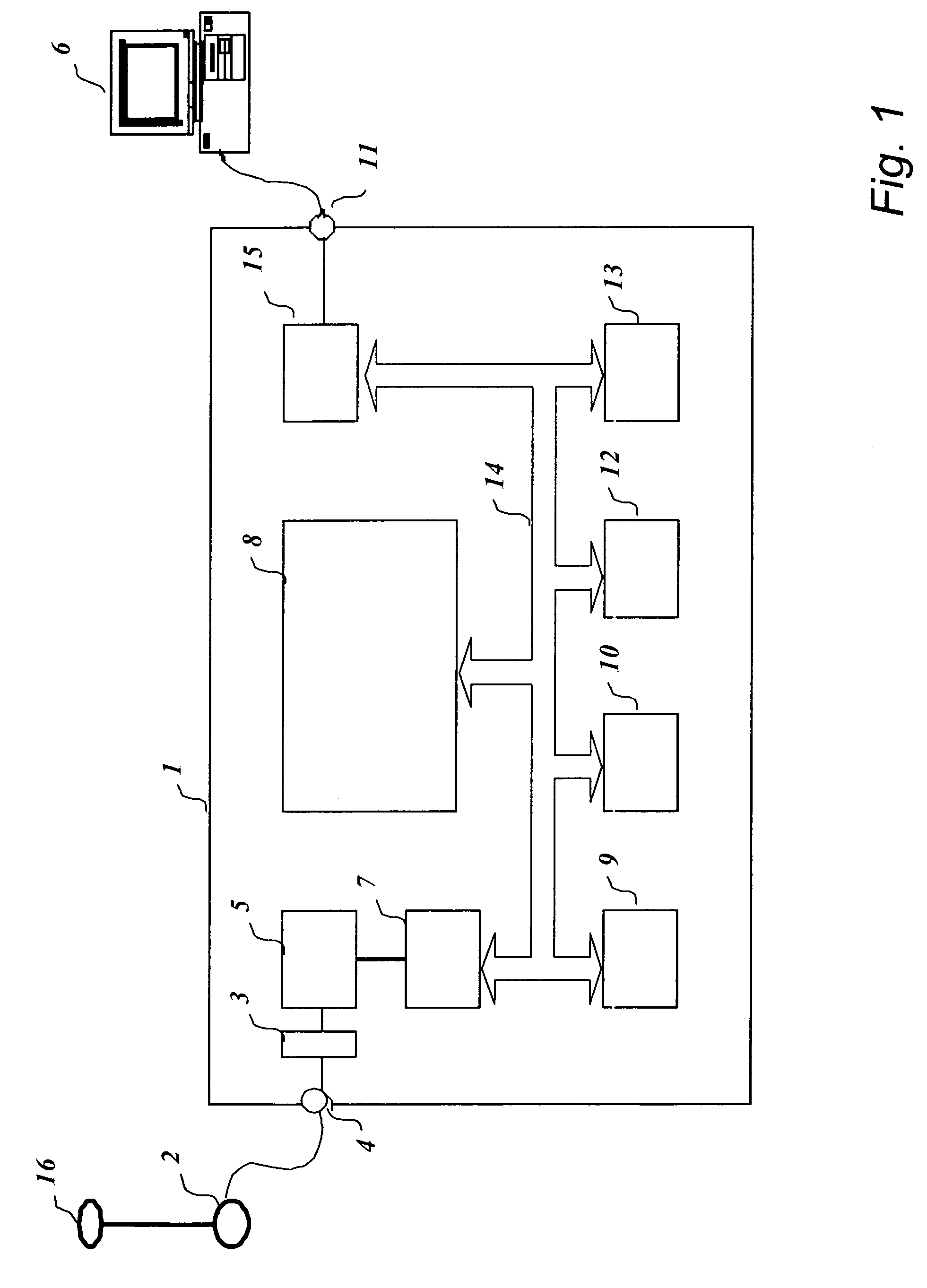System for performing an analysis of pressure-signals derivable from pressure measurements on or in a body
a pressure measurement and analysis system technology, applied in the field of systems for performing pressuresignal analysis, can solve the problems of inability to take single wave parameters into daily clinical practice, inability to explore trends in single wave characteristics, and inability to continuously examine compliance solely on the basis of pressure curves. to achieve the effect of reducing pressur
- Summary
- Abstract
- Description
- Claims
- Application Information
AI Technical Summary
Benefits of technology
Problems solved by technology
Method used
Image
Examples
example 1
[0117]Continuous intracranial pressure monitoring was performed in a girl aged 2 years and 11 months because of suspected shunt failure. In this girl an extracranial shunt was previously placed because of hydrocephalus. Shunt failure was suspected because of headache, lethargy and irritability. In fact, increased, reduced or normal intracranial pressures may cause these symptoms. The results of intracranial pressure monitoring during sleep in this girl were as follows: Mean intracranial pressure 14.4 mmHg, range 0.1-67.3 mmHg, std 5.7 mmHg. The duration of intracranial pressure monitoring was 544 minutes. A mean pressure of 14.4 mmHg is by most physicians considered as borderline whereas a pressure above 15 mmHg is considered as abnormal. Therefore, no indication for surgery (shunt revision) was found on the basis of the intracranial pressure monitoring. The girl was not treated which resulted in lasting symptoms of headache and lethargy for more than 2 years. A retrospective analys...
example 2
[0120]Continuous intracranial pressure monitoring was performed in a 3 years and 10 months old boy due to suspected premature closure of the cranial sutures. The boy had symptoms of increased intracranial pressure. During sleep the data of the intracranial pressure curve were as follows: Mean intracranial pressure 15.4 mmHg, range 0-57.1 mmHg, std 6.0 mmHg, and time of pressure recording 480 min (8.0 hrs). On the basis of the results of intracranial pressure monitoring, surgery was performed. A cranial expansion procedure that is a rather major procedure was performed to increase the cranial volume and thereby reduce intracranial pressure. However, after surgery the patient still had symptoms of intracranial hypertension. Therefore it was decided to repeat the intracranial pressure monitoring, that was undertaken six months after surgery. The data for this monitoring during sleep were as follows: Mean intracranial pressure 15.2 mmHg, range 5.5-39.4 mmHg, std 3.9 mmHg, and time of in...
PUM
 Login to View More
Login to View More Abstract
Description
Claims
Application Information
 Login to View More
Login to View More - R&D
- Intellectual Property
- Life Sciences
- Materials
- Tech Scout
- Unparalleled Data Quality
- Higher Quality Content
- 60% Fewer Hallucinations
Browse by: Latest US Patents, China's latest patents, Technical Efficacy Thesaurus, Application Domain, Technology Topic, Popular Technical Reports.
© 2025 PatSnap. All rights reserved.Legal|Privacy policy|Modern Slavery Act Transparency Statement|Sitemap|About US| Contact US: help@patsnap.com



